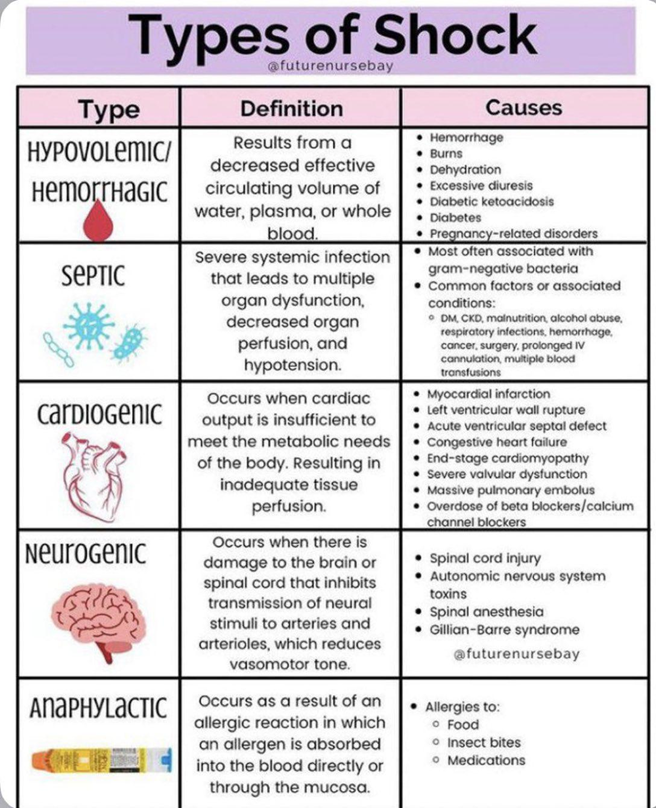A client has been diagnosed with allergic rhinitis. Which symptoms would the nurse expect to observe?
(Select All that Apply.)
Wheezing
Sneezing
Watery eyes
Nasal congestion
Urticaria
Correct Answer : B,C,D,E
A. Wheezing: Wheezing is not a typical symptom of allergic rhinitis. It is more commonly associated with asthma or other lower respiratory conditions.
B. Sneezing: Sneezing is a common symptom of allergic rhinitis. It is often triggered by exposure to allergens such as pollen, dust mites, or pet dander.
C. Watery eyes: Watery eyes, also known as allergic conjunctivitis, frequently accompany allergic rhinitis. This symptom occurs due to inflammation of the conjunctiva in response to allergen exposure.
D. Nasal congestion: Nasal congestion, or a stuffy nose, is a hallmark symptom of allergic rhinitis. It occurs as a result of inflammation and swelling of the nasal mucosa in response to allergens.
E. Urticaria: Urticaria, commonly referred to as hives, may occur in some individuals with allergic rhinitis. However, it is more commonly associated with other types of allergic reactions, such as food allergies or drug allergies.
Nursing Test Bank
Naxlex Comprehensive Predictor Exams
Related Questions
Correct Answer is C
Explanation
A) Treatment with PPIs to decrease stomach acid:
Pancreatic insufficiency is not primarily related to excess stomach acid production, so treatment with proton pump inhibitors (PPIs) to decrease stomach acid would not address the underlying cause of the condition.
B) Treatment with stimulant laxatives:
Pancreatic insufficiency is not typically associated with constipation or the need for stimulant laxatives. While malabsorption of fats due to pancreatic insufficiency can lead to loose stools or diarrhea, treatment with laxatives is not indicated for this condition.
C) Replacement therapy with pancreatic enzymes.
Pancreatic insufficiency occurs when the pancreas does not produce enough digestive enzymes to properly digest food, leading to malabsorption of nutrients. Replacement therapy with pancreatic enzymes is the mainstay of treatment for pancreatic insufficiency. These pancreatic enzyme supplements help to replace the deficient enzymes, aiding in the digestion and absorption of nutrients from food. By taking pancreatic enzyme supplements with meals, the client can improve digestion and prevent nutritional deficiencies associated with pancreatic insufficiency.
D) Decrease food intake:
Decreasing food intake would not address the underlying cause of pancreatic insufficiency, which is the deficiency of pancreatic enzymes needed for proper digestion. In fact, decreasing food intake could exacerbate malnutrition and nutrient deficiencies in individuals with pancreatic insufficiency. The primary goal of treatment is to improve digestion and nutrient absorption by providing supplemental pancreatic enzymes with meals.
Correct Answer is D
Explanation
A) Cardiogenic shock:
Cardiogenic shock occurs when the heart is unable to pump enough blood to meet the body's needs, often due to myocardial infarction (heart attack) or other conditions affecting the heart's function. The client's history of a recent infection does not align with the etiology of cardiogenic shock.
B) Neurogenic shock:
Neurogenic shock occurs due to dysfunction of the autonomic nervous system, typically as a result of spinal cord injury or severe brain injury. It is characterized by widespread vasodilation and bradycardia. The client's history of a recent infection does not align with the etiology of neurogenic shock.
C) Hypovolemic shock:
Hypovolemic shock occurs due to a significant loss of blood volume, such as from trauma, hemorrhage, or dehydration. While infection can lead to fluid loss and dehydration in some cases, the client's history of a recent infection suggests a different etiology, specifically septic shock, which is driven by the systemic inflammatory response to infection.
D) Septic shock.
Septic shock is a type of distributive shock caused by a systemic response to infection. It occurs when an infection triggers a widespread inflammatory response, leading to vasodilation, increased capillary permeability, fluid loss from the bloodstream, and impaired tissue perfusion. The client's history of a recent infection suggests that the shock may be septic in nature.

Whether you are a student looking to ace your exams or a practicing nurse seeking to enhance your expertise , our nursing education contents will empower you with the confidence and competence to make a difference in the lives of patients and become a respected leader in the healthcare field.
Visit Naxlex, invest in your future and unlock endless possibilities with our unparalleled nursing education contents today
Report Wrong Answer on the Current Question
Do you disagree with the answer? If yes, what is your expected answer? Explain.
Kindly be descriptive with the issue you are facing.
